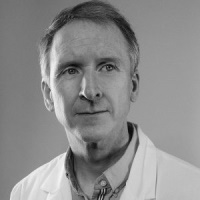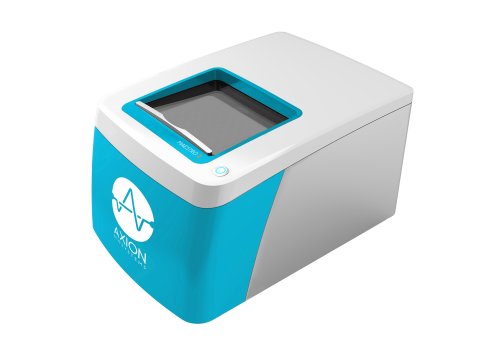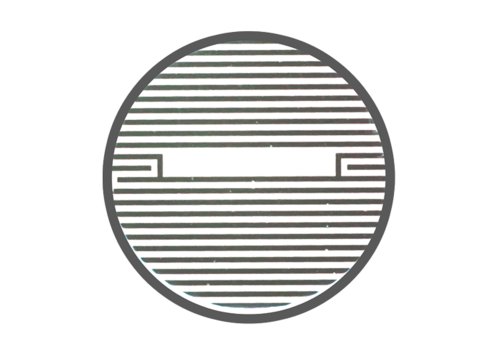What you will learn in this 12 minute webinar:
- >> Prof. Basler’s lab have identified four compounds that inhibit SARS-CoV-2 replication and disrupt viral replication centers.
- >> Specific lipid metabolism pathways are critical for SARS-CoV-2 replication and show promise as therapeutic targets.
- >> The Maestro Z system provides an effective platform for continuously monitoring virus replication and antiviral activity of compounds over several days.
Summary:
Severe acute respiratory syndrome coronavirus 2 (SARS-CoV-2) is the strain of coronavirus that causes COVID-19, the respiratory illness responsible for the COVID-19 pandemic. With over 22 million confirmed cases worldwide, and 750 thousand deaths attributed to the virus, antiviral therapies against SAR-CoV-2 are urgently needed. Compounds targeting cellular membrane biology and lipid biosynthetic pathways have previously shown promise as antivirals, and are actively being pursued as treatments for other conditions. In this webinar, Prof. Christopher F. Basler (Georgia State University), identifies two small molecule inhibitors of VPS34, an enzyme involved in cell membrane dynamics, as well as two inhibitors of lipid metabolism, that can suppress SARS-CoV-2 virus replication in human cells in vitro.
About the presenter:

Prof. Christopher Basler is the Director of the Center for Microbial at Georgia State University. Basler became Professor of Microbiology at Icahn School of Medicine at Mount Sinai in New York City in 2013. He was elected Fellow of the American Academy of Microbiology in 2014. His major research interests are immune evasion and replication mechanisms of filoviruses and other emerging RNA viruses, including SARS coronavirus 2. Notable achievements include the identification and characterization of mechanism of immune evasion by Ebola virus and Marburg virus.
Transcript of webinar on The race to find a COVID-19 therapy on the Maestro Z system
Thank you for joining for today's Coffee Break Webinar. Today's topic is "The race to find a COVID-19 therapy: Inhibitors of VPS34 and lipid metabolism suppress SARS-CoV-2 replication.
Severe acute respiratory syndrome coronavirus 2, or SARS-CoV-2, is the strain of coronavirus that causes COVID-19, the respiratory illness responsible for the COVID-19 pandemic. With over 22 million confirmed cases worldwide, and 750,000 deaths attributed to the virus, antiviral therapies against SARS-CoV-2 are urgently needed.
Coronaviruses rely on the body's own cell membranes to replicate. Coronaviruses use the cell membrane for host cell entry and release, as well as the establishment of viral replication sites. Generation of replication centers is a key feature of the replication of many viruses. These can serve as sites where the components required for viral replication concentrate within a relatively closed environment and hide from the host's innate immune response. Compounds targeting cellular membrane biology and lipid biosynthetic pathways have previously shown promise as antivirals and are actively being pursued as treatments for other conditions.
In this webinar, Dr. Christopher F. Basler identifies two small molecule inhibitors of VPS34, an enzyme involved in cell membrane dynamics, as well as two inhibitors of lipid metabolism, that can suppress SARS-CoV-2 virus replication in human cells in vitro. One of these compounds is Orlistat an inhibitor of lipases and fatty acid synthetase which is approved by the FDA as a treatment for obesity.
Dr. Basler is the Director of the Center for Microbial Pathogenesis at Georgia State University. He obtained his PhD. from Albert Einstein College of Medicine in 1995 and has since gone on to achieve notable recognition with his interest in immune evasion replication mechanisms of phyloviruses and emerging RNA viruses such as COVID-19.
Hi my name is Christopher Basler. I'm Professor and Director of the Center for Microbial Pathogenesis at the institute for Biomedical Sciences at Georgia State University in Atlanta. Today I want to describe data from my lab showing that inhibitors of host protein VPS34 and inhibitors of host fatty acid metabolism can suppress SARS coronavirus 2 replication.
As you'll see the studies that we perform to take advantage of Axion BioSystems' Maestro Z. It's a machine with dual functions as an incubator for specialized 96-well plates with electrodes that also monitor the health of a cell monolayer over time. We reasoned that the instrument could monitor cytopathic effects of SARS coronavirus 2 replication, and also measure the effects of antiviral compounds that block virus replication.
To test the feasibility of using Maestro Z to monitor SARS coronavirus 2 growth we first asked what would happen if we infected Vero E6 cells with different amounts of virus and followed the infection over time. So we compared uninfected cells to cells infected at multiplicities of infection of one to ten thousand, to ten. The graph on the left shows the response of cells as measured by the Maestro Z over the course of three days. The blue line at the top is the uninfected cell curve. Electrical resistance changed little over time in the uninfected cells. However upon infection the monolayer is damaged by virus replication, and so you can see a beautiful dose response with high amounts of virus on the left causing relatively rapid cell damage and lower amounts of virus causing slower cell damage. Based on the time point at which the curves reach the lower limit we calculated a median time to death which is depicted on the right.
We next asked how the Maestro Z would perform to measure antiviral activity of a known SARS-CoV-2 antiviral Remdesivir which is being used to treat COVID-19 patients. We mock infected or infected cells with SARS coronavirus 2 at a multiplicity of infection of one in one hundred, and we performed the infection in the presence of six different concentrations of Remdesivir ranging from 50 micromolar down to six nanomolar. As you can see in the left panel, the highest concentrations of drug, 50 and 8.3 micromolar fully blocked replication and the curves parallel the uninfected sample. 1.38 micromolar, the orange curve, gave partial, while lower concentrations of drug were not inhibitory. In the right panel we converted the data from the Maestro Z to percent inhibition and determined an IC50 of 1.5 micromolar which is essentially the same as that determined in other assays for SARS coronavirus 2 in Vero cells.
With a working assay in hand, we next want to identify compounds with novel anti-coronavirus activities. So the subsequent data I will show is based on the observation that coronaviruses rely on host membranes for all aspects of the replication, including as depicted in the diagram, viral entry, RNA synthesis, assembly, and egress. To look for potential host targets involved in membrane trafficking and fatty acid metabolism, we focused so far on three host cell enzymes. The first is known as VPS34. It phosphorylates phosphatidylinositol generating phosphatidyl and inositol 3-phosphate. It's important for regulation of mammal trafficking and plays key roles in autophagy.
We're interested in part because it is known to play roles in replication of positive sense RNA viruses including Hepatitis C virus and Tombus viruses, and it's a potential target of interest for cancer therapy. We also looked at long chain fatty acid synthetase. This is an enzyme that activates long-chain fatty acids to form acyl- CoAs and it's known to play roles in replication of Hepatitis C virus and Rotavirus, is a potential target in cancer and for arthrosclerosis. And finally we looked at fatty acid synthetase. So this is an enzyme that performs de novo synthesis of long chain fatty acids. Product of its reactions is palmitate, plays roles in the replication of positive sense RNA viruses including Flaviviruses and the coronaviruses, also plays a role in replication of Hepatitis B virus and is of interest as a therapeutic target for obesity, diabetes, and cancer.
This slide depicts antiviral activities of two VPS34 inhibitors called, Inhibitor 1, and PIK-III. So in this experiment we used a 10 point dose response curve. You can see that the Maestro Z readily detects cytotoxicity of the compounds at high concentrations. For each compound, 50 micromolar, which is the green curve, and 16 micromolar, the purple curve, cause a rapid drop in resistance. However, intermediate and lower concentrations enable the cells to survive longer than the mock treated infected controls, which are shown in the red curve.
We next converted the Maestro Z data to percent inhibition, and obtained very nice IC50s below one micromolar, and 90 inhibitory concentrations in the two to three micromolar range for Inhibitor 1 and PIK-III.
We also looked at Orlistat which is an FDA approved anti-obesity drug that blocks fatty acid synthase. This showed no cytotoxicity and exhibited weak inhibition in Vero cells with modest preservation of resistance at 500 and 166 micromolar as shown in the left panel.
We also tested Triacsin C, an inhibitor of long chain fatty acyl-CoA synthetase which was somewhat more potent. Inhibition at 50 or 16 micromolar can be seen on the right. Here are the IC50s for Orlistat and Triacsin C. Orlistat is only inhibitory at very high concentrations in Vero cells. Triacsin C was more active with an IC50 of about 20 micromolar. We next wanted to test the same compounds in a different cell type, one that is more biologically relevant and we wanted to validate the antiviral effects of the compounds by a different assay.
So here we infected Calu-3 cells in human airway epithelial cell line. We treated the cells with compound then collected cell superintendents 48 hours post-infection and determined how much infectious virus was present by plaque assay. In parallel we assayed the viability of the cells treated with different compound concentrations.
On the left I'm showing the plaque assay titers in the presence of the two VPS34 inhibitors where you can see a clear antiviral effect. We converted the viral titers to percent inhibition and plot of these data and the cell viability data on the same graphs.
These are shown on the right. The data supports the conclusions from the Vero cell Maestro Z experiments, IC50s were below one micromolar and the compounds exhibited no cytotoxicity. Here we performed similar experiments but with Orlistat and Traicsin C.
As was the case for the Vero cell Maestro Z experiments both were inhibitory but interestingly the IC50s were substantially lower in the Calu-3 experiment, around 20 micromolar for Orlistat and less than 1 micromolar for Tracsin C. This suggests that inhibitors of fatty acid metabolism may have promise as anti-SARS coronavirus 2 agents, and that replication in Calu-3 cells is more dependent on these pathways as compared to Vero cells. Finally to address where these compounds act in the replication site of SARS-CoV-2, we performed a time of addition studies using the Vero cell Maestro Z assay.
We either added compound one hour prior to infection, removed the compound and then infected, added compound one hour prior to infection but left it on the cells for the course of the experiment, or we added compound two or four hours post infection and left the compound on for the duration of the experiment. As you can see in panel B, the two VPS34 inhibitors exhibited activity even when they were removed prior to virus addition. However, they were also active when added late in infection. This suggests that they act at an early step proximal to viral entry and at later steps associated with viral gene expression and genome replication. The fatty acid metabolism inhibitors, Orlistat and Triacsin C were not active when removed prior to infection, but were active when added two or four hours post infection. This suggests that they target post-entry steps in the replication cycle.
So to conclude, the Maestro Z provides an effective platform to continuously monitor virus replication and antiviral activity of compounds over several days.
VPS34, fatty acid synthase, and long chain fatty acyl-CoA synthetases are host factors of potential importance for SARS coronavirus 2 replication, including for steps after viral entry. And, VPS34 fatty acid synthase and the long chain fatty acyl-CoA synthetase inhibitors represent potential anti-SARS coronavirus 2 therapeutics.
Finally, to thank the people who did the work, I want to acknowledge Alex Jureka and Jesus Silvas, postdocs in my lab who generated all the data I showed you today. They were helped in setting up the Maestro Z system by people from Axion BioSystems including Tom O'Brien, Anthony Nicolini, and Stacie Chvatal. And finally I want to thank the Georgia Research Alliance for getting us in touch with Axion so that we can perform the studies that we showed you today. Thank you.
And that is the conclusion for today's Coffee Break Webinar.
If you have any questions you would like to ask regarding the research presented or if you are interested in presenting your own research with microelectrode array technology or impedance based assays, please forward them to coffeebreak@axionbio.com For questions submitted to Dr Basler, he will be in touch with you shortly.
Thank you for joining in on today's Coffee Break Webinar and we look forward to seeing you again.




